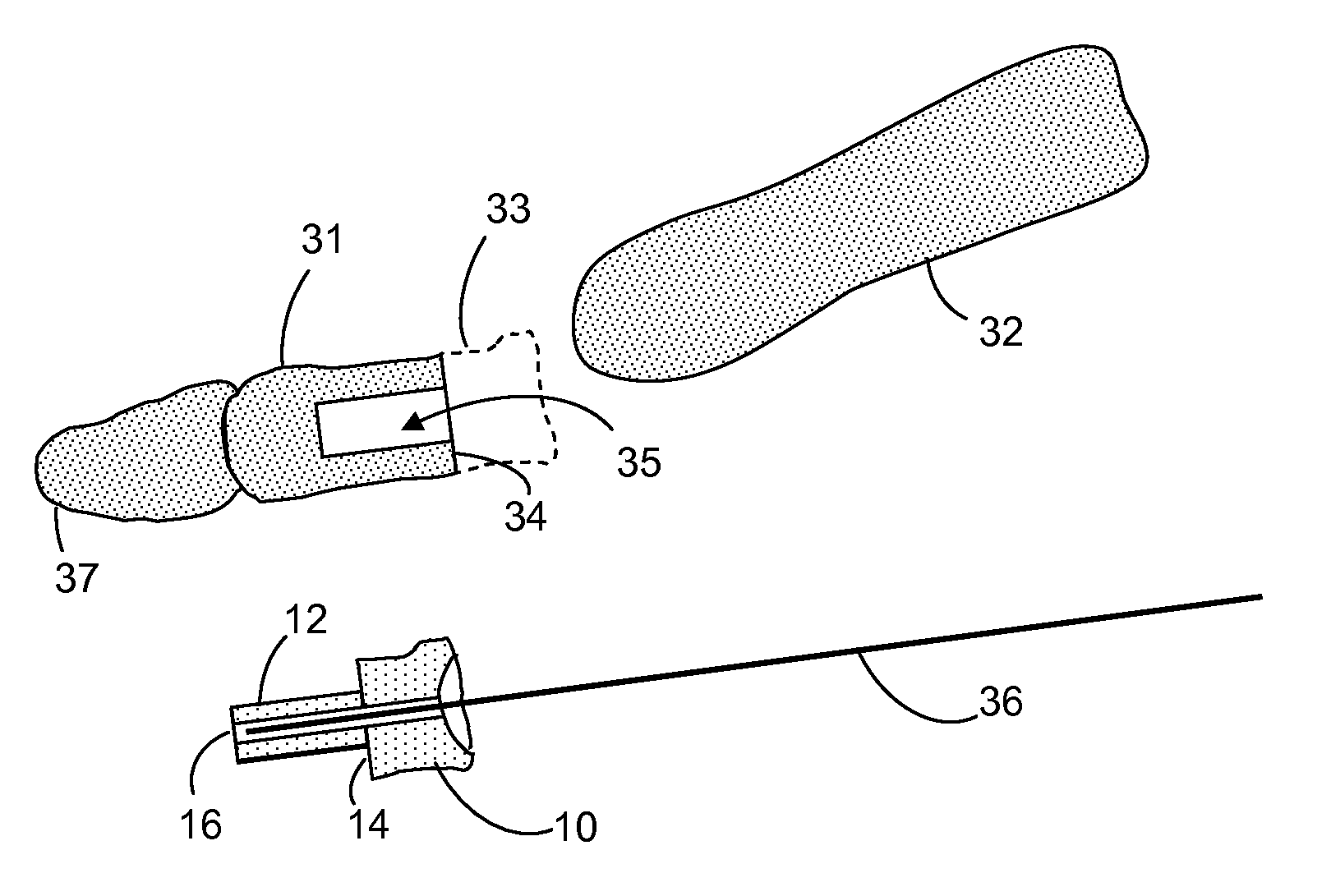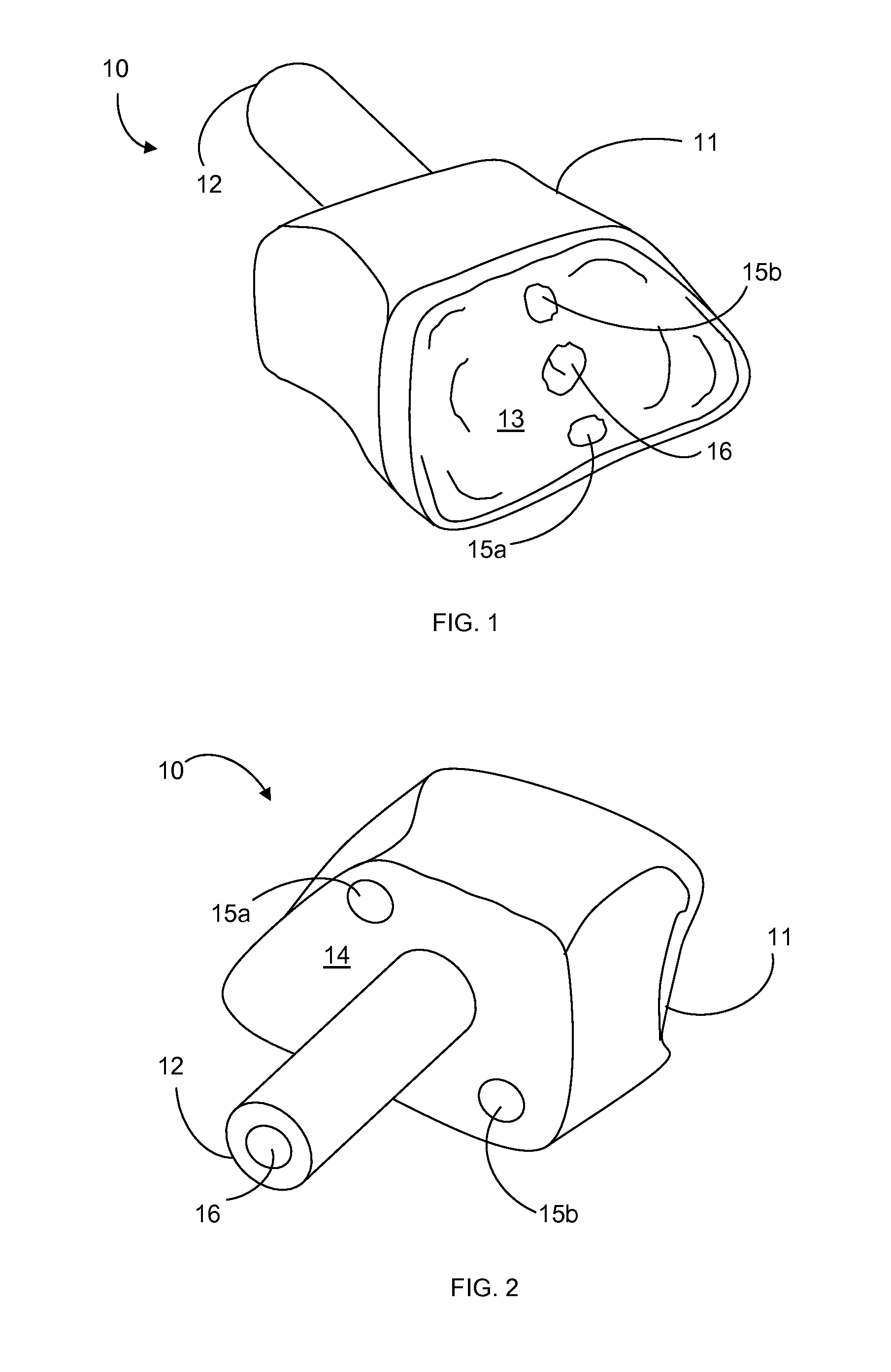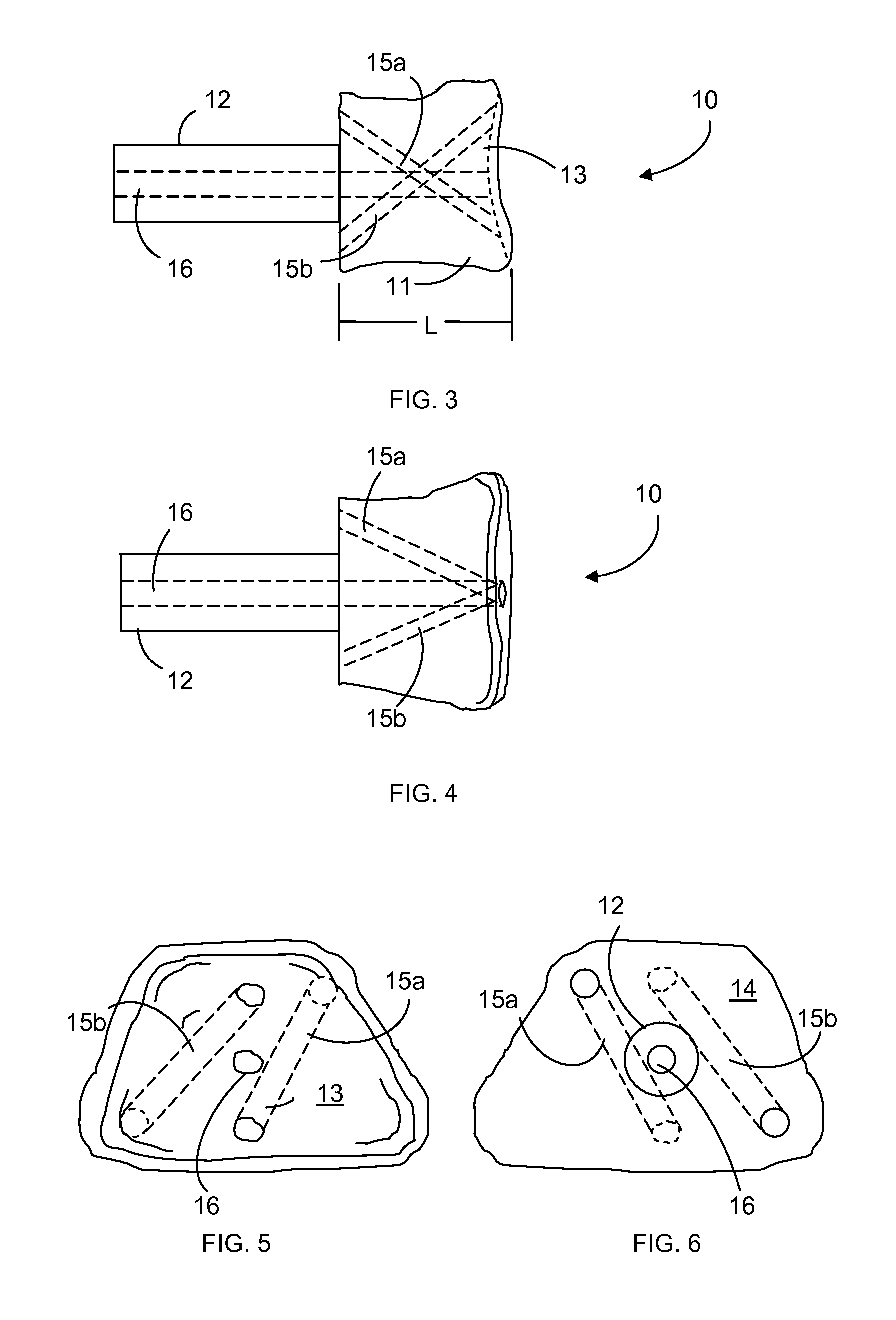Cortical Bone Spacers for Arthrodesis
- Summary
- Abstract
- Description
- Claims
- Application Information
AI Technical Summary
Benefits of technology
Problems solved by technology
Method used
Image
Examples
Embodiment Construction
[0026]The present inventive surgical system includes one or more bone spacers for use in arthrodesis of bones across a joint, and methods of using the spacer to perform an arthrodesis. A spacer in the present system may be inserted in the proximal or distal end of either bone that forms the joint, as described herein, and is designed to replace a segment of the bone into which it is inserted, referred to herein as the “receiving bone.” The end of the receiving bone from which the bone segment is removed, which is also the end of the receiving bone that forms part of the joint, is referred to herein as the “damaged end.” The bone in the joint that cooperates with the receiving bone is referred to herein as the “cooperating bone.” The end of the cooperating bone that forms part of the joint is referred to as the “cooperating end.” It will be understood that the first or second bone, or both bones, of the joint may be receiving bones, and the proximal or distal end of either bone may b...
PUM
 Login to View More
Login to View More Abstract
Description
Claims
Application Information
 Login to View More
Login to View More - R&D
- Intellectual Property
- Life Sciences
- Materials
- Tech Scout
- Unparalleled Data Quality
- Higher Quality Content
- 60% Fewer Hallucinations
Browse by: Latest US Patents, China's latest patents, Technical Efficacy Thesaurus, Application Domain, Technology Topic, Popular Technical Reports.
© 2025 PatSnap. All rights reserved.Legal|Privacy policy|Modern Slavery Act Transparency Statement|Sitemap|About US| Contact US: help@patsnap.com



